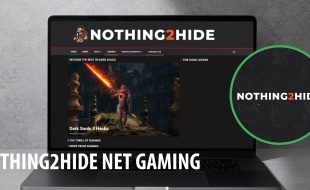Table Of Contents
- Streamlining Content Delivery Across Multiple Channels
- Enhancing Personalization and User Experience
- Simplifying Content Updates and Real-Time Changes
- Optimizing for Performance Across Smart TV Interfaces
- Future-Proofing Content Management for OTT and Smart TV Platforms
- Enabling Seamless Integration with OTT Platforms and Smart TV Applications
- Supporting Interactive Content and Rich Media Experiences on Smart TVs
- Conclusion
Integrating Headless CMS with Smart TVs and OTT Platforms
Last Updated on: September 4th, 2025
No longer is content distribution relegated to websites or apps. As digital transformation continues to pave the way for advancements, smart TVs and OTT services have become new content distribution channels for on-demand video, entertainment, and more interactive offerings.
Therefore, a headless CMS integration with smart TVs and OTT services would enable companies to access and manipulate content across various devices through one unified operating system ensuring consistent experiences everywhere.
Streamlining Content Delivery Across Multiple Channels
Headless CMS platforms are excellent for reaching various digital endpoints for content delivery, including Smart TVs and OTT options. Since everything is stored in the API-based cloud without a connection to any one front end, content can be distributed in real time and more easily across the boards without redundancy and overly complicated deployments.
For example, a CMS for video delivery can store all video content, descriptions, trailers, and associated metadata in one hierarchical structure. As teams prepare device-specific renditions for these endpoints, they can estimate target bitrates with a video bitrate calculator to keep playback smooth across Smart TV and OTT apps.
That headless CMS can then let that video delivery service send appropriate information to the apps created for the Smart TVs to provide on-demand services, to the Roku channel, or to even OTT options like Apple TV or Amazon Fire Stick.
This means that companies can better match their back-end data development needs concerning their delivery services without worrying about independent deployments that risk inefficiency and inequity for users across different platforms. Storyblok’s flexible content management supports this kind of seamless back-end operation, ensuring consistent data flow regardless of the device or platform.
Companies can ensure that Smart TV enterprises and OTT delivery will offer the same video and data services to clients with the same opportunities, merely a different interface front end. This can be an on-demand feature on a Smart TV or an actual live stream through an OTT option but the view may differ, yet the back end serves the same quality for everyone.
This also allows for creators to not worry about what might happen on their devices or platforms down the road because the headless CMS can always accommodate without further intervention.
Enhancing Personalization and User Experience
Personalization is one of the greatest engagement drivers, and as OTT and Smart TV usage grows, the demand for personalization increases exponentially. The headless CMS supports such personalization efforts by integrating effortlessly with user data platforms and behavioral assessment tools.
By leveraging access to user data, brands can distinguish and leverage proprietary, personalized content based on what users enjoy, their viewing habits, and engagement behavior across devices.
This ensures an additional relevant factor for users to use the brand’s offerings, guaranteeing that content is accurate and meaningful, and generating more engagement and comfort with what’s being offered. For instance, if someone regularly watches stand-up comedies or suspense thrillers, the headless CMS will automatically refresh recommended content, personalities, or even related content in those fields.
This performs across devices from Smart TVs to mobile apps to OTT applications as recommendations are linked to that specific user profile. The ability to customize so thoroughly without any effort on the user’s behalf makes people more likely to engage for longer.
Moreover, Smart TVs and OTT offerings supply a portal through which enterprises can interact with their customers in a more engaged manner. A headless CMS permits the addition of elements such as interactivity, personalized recommendations, and even geographically determined offers, which make the viewing experience all the more dynamic and instantly applicable to personal preferences.
For example, geographically determined offers could include recommendations for nearby events or movie showings and supplemental footage based on where one lives. This enhances the service.
Thus, loyalty is crucial for residents to want to consume this content. Enterprises that tout personalized content and allow for personalized experiences create a better relationship with their viewers who are more likely to linger on the platforms or pay for subscriptions.
For example, if they can geographically recommend personalized content or rely upon information from what a user viewed or enjoyed before, these enterprises will have an air of immediacy that makes users feel special and valued.
When people have this emotional reaction, they’re likely to continue interacting with the service and remain loyal for the long haul, creating improved customer retention and revenue generation.
Ultimately, headless CMS options, along with user feedback and engagement metrics, enable brands to develop a fully tailored, engaging experience across Smart TVs and OTT platforms, which fosters user loyalty, boosts content relevancy, and creates bigger, more meaningful audiences over time.
Simplifying Content Updates and Real-Time Changes
Yet another benefit of the headless CMS integration with Smart TVs and OTT platforms is the ability to update or change content in real-time. Traditional CMS requires forced updates or changes that, at times, require downtime or manual intervention.
However, headless CMS allows for changes and updates that take place in an instant across all systems without forced updates by the user. For example, potentially, the streaming application can change metafiles for its films, update trailers, or adjust recommendations without having to redeploy the application or interrupt viewing.
The fact that things can change in real-time is crucial to providing an always updated experience for users who want fresh offerings, let alone in a fickle world like entertainment. Therefore, whether it’s changing what’s available through promotional tiles, new episodes for series, or additional seasons, everything can be changed and pushed through the headless CMS to all platforms instantly without a hitch.
Optimizing for Performance Across Smart TV Interfaces
Performance is a major issue with content delivery as it relates to Smart TVs and OTT. If a show lags, takes too long to load, or streams in anything other than 4K for an extended period of time, users become agitated and will immediately disengage and/or churn.
With so many other shows, channels, and platforms available at the touch of a button in a digital space, performance is a useful means to keep users stabilized. A headless CMS improves performance because content creators can determine the best content delivery methods for every type of device; if a handheld phone is incapable of certain movements that a larger iPad or laptop can manage, adjustments need to be made.
The primary advantage that headless brings to the table is the opportunity for fluid content adjustment. Based on the hardware, network, and technical specifications of different Smart TVs and OTT devices, adjustments can be made automatically, catering to the consumption needs.
Using APIs to communicate with front-end channels, for instance, allows brands to deliver content in whatever adjusted capacity they need. For lower streaming capabilities, for example, resolution can be downgraded and image sizes can be reduced for those devices with lower-level hardware, yet simultaneously, high-end Smart TVs can receive the best streaming options without interference.
For example, a headless CMS knows what device a user is operating on and what their internet speed is; it can send lower resolution to those with slower internet connections and offer high-definition or 4K to those with faster, stable speeds.
This not only helps a user get what they need, but it presents the best experience for everyone as they are able to access live streams, watch on-demand videos, or interactive pieces without terrible buffering. Since content quality is crucial when operating on so many different planes, appropriate delivery makes everything that much more polished.
In addition, beyond load times relative to device capability and capacity, a headless CMS can be paired with Content Delivery Networks (CDNs) to ease load times and create additional efficiencies.
CDNs store cached content on multiple distributed servers across the globe so that content doesn’t always have to travel its entire distance to each endpoint; there’s likely a CDN server that’s relatively nearby, so to speak.
This reduces latency while simultaneously improving the reliability of content delivery for those who might not operate in high-speed arenas. Therefore, with the CDN, the headless CMS is supported to load and grab content from anywhere quickly.
When companies implement a headless CMS and CDN, loading times increase, and streaming and content delivery on multiple Smart TVs and OTT devices improve. Improved user experience equals engagement and increased audience retention. Therefore, with a content management system that shows such performance and versatility, audiences get what they want, when they want it, on any device.
Future-Proofing Content Management for OTT and Smart TV Platforms
In an evolving OTT and Smart TV landscape, companies must be mindful of technological advances, changes in audience preferences, and information about content distribution standards. Headless CMS solutions provide the technological adaptability and scalability to meet an increasingly diverse range of devices, formats, and audience expectations. This is because by decoupling content from the front-end presentation layer, a headless CMS can use centralized content management and distribution across devices, regardless of how it is rendered on the front end.
Therefore, content teams can be responsive to changes, and the system expands without major interruption. When new devices are announced or new platforms gain the rights to distribute a film or series, a headless CMS can easily support the change. New ports can connect seamlessly to the existing API, and content can fit the new device dimensions without having to be rebuilt anew.
For example, when the next popular streaming box or Smart TV app launches, companies can rely on their headless CMS to automatically push that content to those sources in appropriate formats HD, overlays, streaming services protocols and facilitate consistent content consumption across all facilitated entry points without latency and delays in transmission.
Furthermore, the API-first access to a headless CMS provides companies with real-time upgrades and changes, allowing content strategies to be woefully adjusted based on newly necessary user demand or shifting technologies. This anticipatory change gives companies the ability to future-proof their content management systems so that they can forever render content for newly developed devices and platforms without needing to change the back end constantly.
Ultimately, the capability of headless CMS solutions to facilitate rapid change keeps companies on par with competitive variances in the changing media landscape, allowing users to always access the same content on any device now and later.
Enabling Seamless Integration with OTT Platforms and Smart TV Applications
A benefit of headless CMS in conjunction with OTT platforms and Smart TVs is its integration capabilities with third-party services and apps. Because OTT platforms and Smart TV apps require different functionalities, a headless CMS provides the opportunity for businesses to integrate with various external systems. Businesses can provide content in various formats, including, but not limited to, video, audio, or in-app engagement. In addition, integration with third-party applications is seamless through APIs. Thus, businesses can develop a singular operating system for the management and distribution of content yet maintain a uniform experience across all consumer interaction points.
Supporting Interactive Content and Rich Media Experiences on Smart TVs
Smart TVs open up a new distribution avenue for real-time engagement via robust media and interactivity. A headless CMS can power such experiences as it offers the content management and content delivery infrastructure necessary to power real-time content on Smart TV applications. For example, support for interactivity like quizzes, polling, live events, or even in-app purchases is possible.
The positionality of updates and content delivery via APIs allows for complex, interactive realities to be built that operate based on user engagement or user demands. For example, a Smart TV channel can host a live event powered by a headless CMS to give the intended audience specific questions while also delivering answers as an in-app function.
Conclusion
The benefits of integrating a headless CMS with Smart TVs and OTT devices are that organizations can streamline content creation and delivery while increasing audience engagement and cross-device performance. A headless CMS provides the specialized tools, flexibility, scalability, and real-time updates to ensure organizations can craft and disseminate rich, customized content that performs across all engagement platforms. Content will subsequently remain up-to-date, cohesive, and effective for the inevitable future of engagement.
Read Also:














